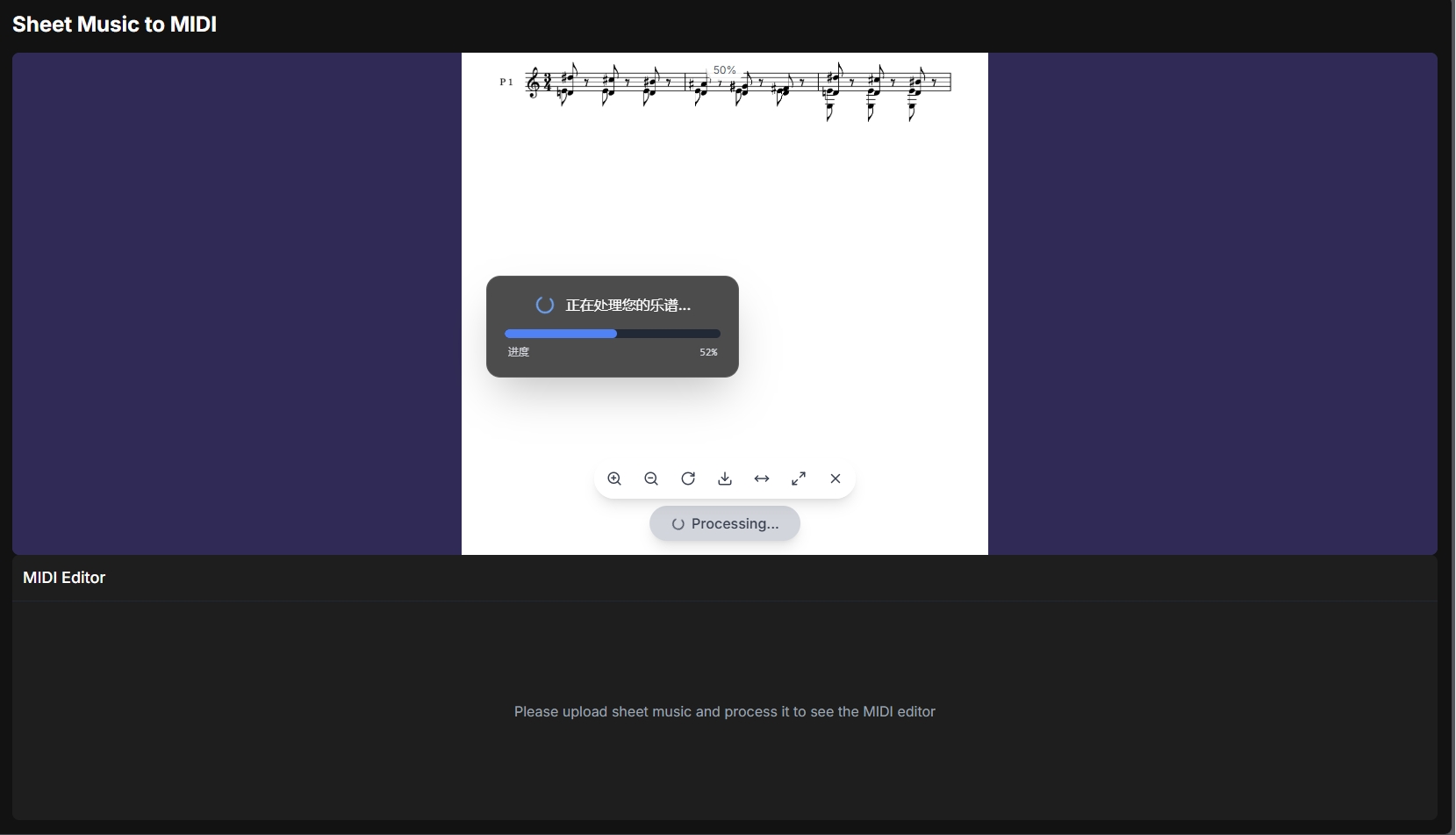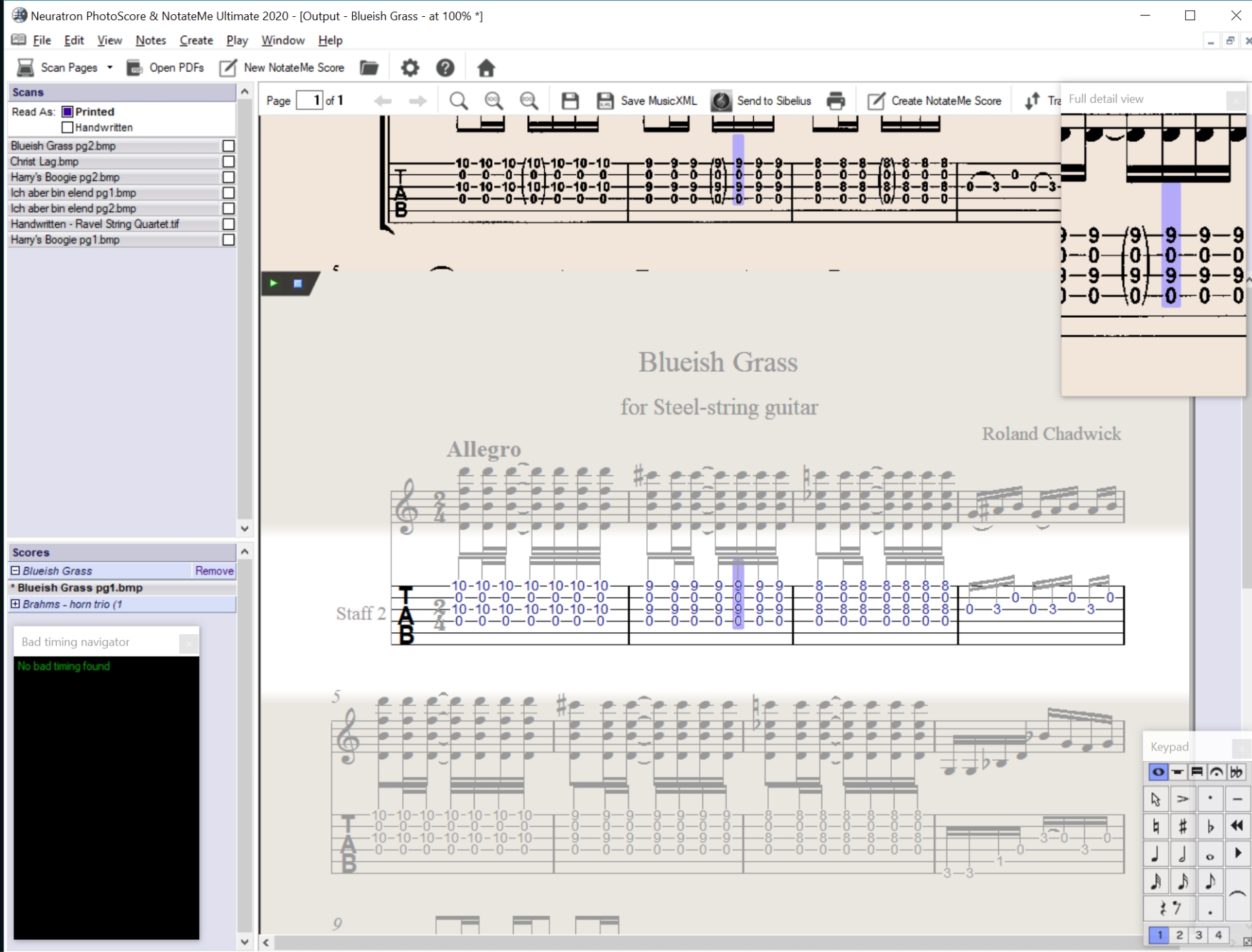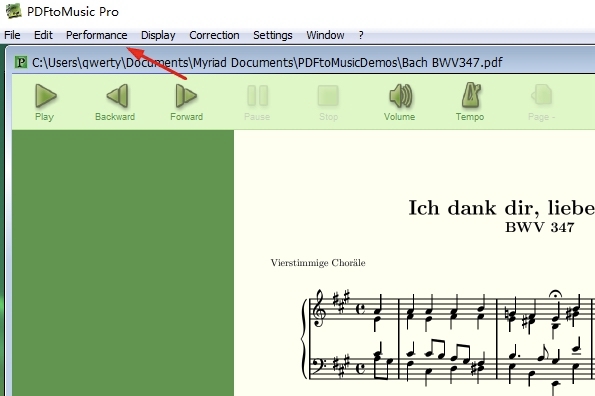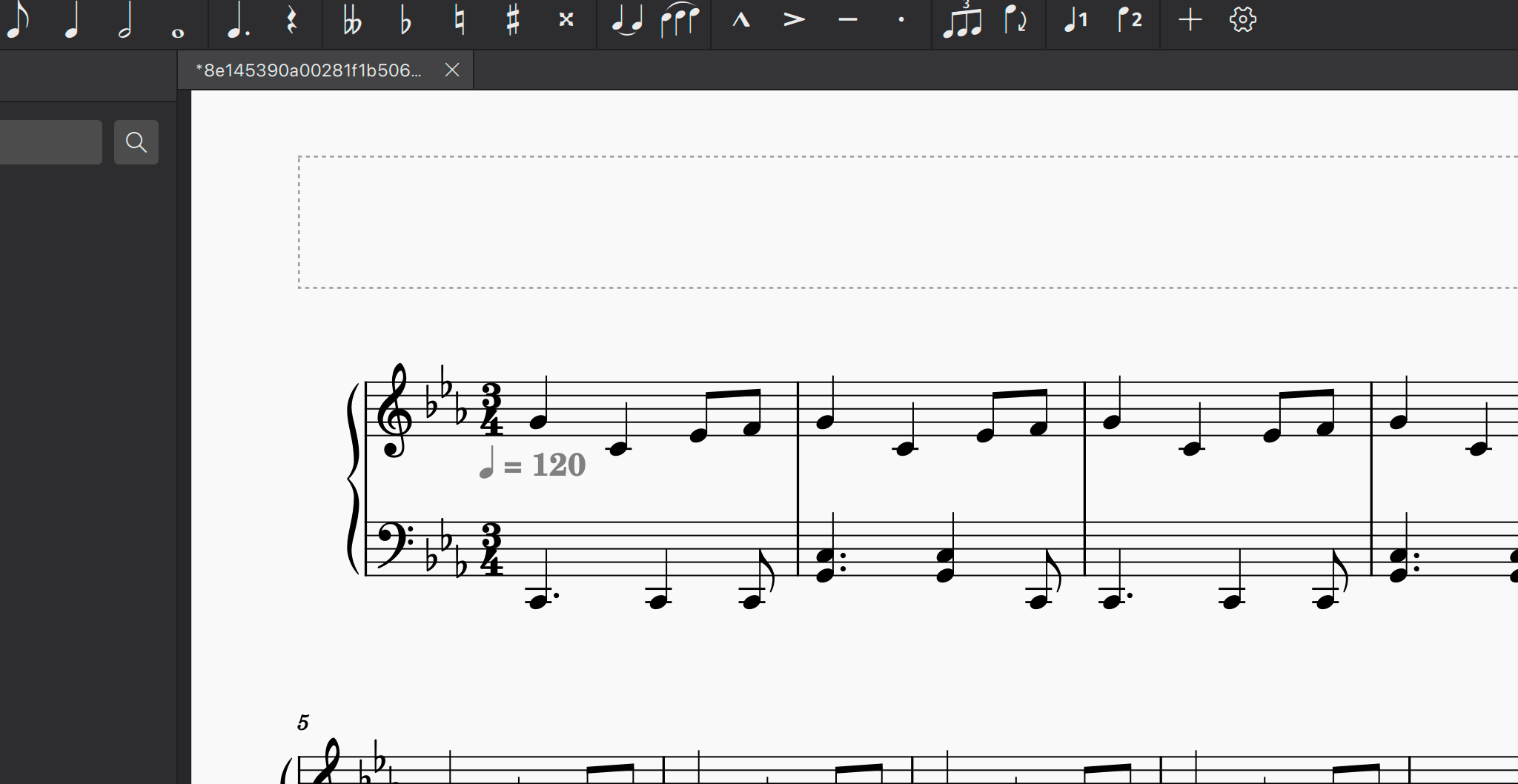5 Best Optical Music Recognition (OMR) Software for Musicians in 2025
1. Melogen AI – Best AI-Powered Online OMR

If you're after an AI-powered, online tool that gets the job done without complicated setup, Melogen AI is the go-to choice. It's completely web-based, meaning no software installation, and it converts sheet music to MIDI in seconds.
I've used this tool to instantly test out jazz charts, orchestral scores, and handwritten ideas, and the AI recognition is surprisingly accurate—way better than older OMR tech that messes up complex rhythms or slurs.
Key Features:
- ✔ Fully online – No downloads, works from any device
- ✔ AI-powered OMR – Smarter than traditional scanning tools
- ✔ MIDI & MusicXML export – Perfect for DAWs & notation software
- ✔ Built-in editor – Adjust and preview before exporting
Pros:
- ✔ Works in any browser
- ✔ No installation needed
- ✔ Fast processing speed
- ✔ High accuracy with AI
Cons:
- ❌ Requires internet connection
- ❌ Limited offline features
2. Sibelius PhotoScore & NotateMe – Best for Professional Notation Work

If you've been in the music world for any length of time, you know Sibelius. It's been a staple in professional composition, orchestration, and engraving for decades. Naturally, PhotoScore & NotateMe—its dedicated PDF-to-MIDI and handwritten notation tool—is one of the most powerful options out there.
I've used this software when working on full orchestral scores that needed pixel-perfect transcription, and the results were incredibly accurate. It's one of the few tools that can actually handle handwritten music, which is a lifesaver when dealing with composer sketches, old manuscripts, or conductor notes. It integrates seamlessly with Sibelius, making it a go-to choice for professionals who need the best possible accuracy when digitizing scores.
Why Choose Sibelius PhotoScore & NotateMe?
- ✨ Industry-Standard Power – If you're serious about notation and engraving, you probably already use Sibelius. This tool is designed to fit perfectly into that workflow, making it ideal for composers, arrangers, and engravers who need professional-grade results.
- 🎼 Handles Complex Scores with Ease – Unlike most OMR tools that choke on large, intricate compositions, PhotoScore is built for heavy-duty tasks. I've fed it full orchestral scores, and it does a solid job of interpreting multi-staff arrangements with minimal cleanup.
- ✍️ Handwritten Music Recognition – This is one of the only tools I've used that can reliably read handwritten scores and turn them into editable digital files. It's not perfect, but it's miles ahead of anything else on the market.
- 🔄 MIDI & MusicXML Export – Once your PDF is processed, you can export MIDI or MusicXML for easy editing in Sibelius, Finale, or DAWs like Logic and Cubase.
Where It Falls Short
Despite its power, Sibelius PhotoScore comes with a major catch: it's expensive. If you're a pro-level composer or engraver, it's a worthwhile investment. But if you just need to quickly turn PDFs into MIDI for production or arranging, this might be overkill.
Also, there's another big issue—it's tied to your computer. If you're working in your home studio, it's fantastic. But what if you're in a new recording studio and forgot to bring your laptop? You're out of luck. That's where tools like Melogen AI come in handy. Since it's fully online, you can convert scores to MIDI instantly from any device, anywhere, without needing to install anything.
Pros:
- ✔ Best-in-class accuracy for professional composers
- ✔ Reads handwritten as well as printed music
- ✔ Works seamlessly with Avid Sibelius
Cons:
- ❌ Very expensive
- ❌ Tied to your computer—not ideal for mobile or remote work
3. PDFtoMusic Pro

PDFtoMusic Pro has been my go-to tool for handling professionally engraved scores. What sets it apart is its exceptional handling of vector PDFs—those clean, digitally created scores that come straight from notation software.
Key Features:
- 🎯 Specialized in vector PDF analysis
- 🎼 Excellent for publisher-quality sheet music
- 💾 Multiple export formats (MIDI, MusicXML, WAV)
- 🔍 Detailed recognition settings
Pros:
- ✔ Accurate conversion for vector PDFs
- ✔ Supports MusicXML and MIDI
- ✔ Compatible with multiple music software
Cons:
- ❌ Not ideal for scanned PDFs
- ❌ Expensive compared to other tools
3. SmartScore X2 Pro – Best for Orchestral Scores

SmartScore X2 Pro is built for big scores. It scans multiple staves, recognizes dynamics and articulations, and even lets you edit the notation within the software before exporting.
Key Features:
- ✔ Handles multi-staff orchestral music – Ideal for conductors & arrangers
- ✔ Accurate OMR with rhythm detection – Avoids common timing errors
- ✔ Notation editing built-in – Fix mistakes before exporting
- ✔ Works with both MIDI & MusicXML – Integrates with major notation tools
Pros:
- ✔ Excellent for complex scores
- ✔ Professional editing tools
- ✔ High accuracy rate
- ✔ Good for batch processing
Cons:
- ❌ Steep learning curve
- ❌ Premium pricing
- ❌ Desktop only
4. PlayScore 2 – Best for Mobile OMR

Imagine pointing your phone at sheet music and hearing it play back instantly. That's what PlayScore 2 does. It's not just a scanner—it actually plays the notation back in real-time, making it great for checking arrangements or practicing on the fly.
Key Features:
- ✔ Scans sheet music from your phone – No need for a scanner
- ✔ Live playback feature – Hear the music before exporting
- ✔ MusicXML export – Use it with notation software
- ✔ Works on iOS & Android – Super convenient for quick checks
Pros:
- ✔ Instant mobile scanning
- ✔ Real-time playback
- ✔ Easy to use
- ✔ Great for quick checks
Cons:
- ❌ Limited editing features
- ❌ Not ideal for complex scores
5. MuseScore PDF Import – Best Free OMR Tool

MuseScore's built-in PDF import feature uses OMR technology to scan sheet music and convert it into editable notation. It's not the most accurate tool for complex scores, but for basic sheet music, it gets the job done—without spending a dime.
Key Features:
- ✔ Completely free – No paid subscription required
- ✔ Works within MuseScore – Edit notation right away
- ✔ Exports to MIDI & MusicXML – Decent integration with DAWs & notation software
Pros:
- ✔ Free to use
- ✔ Open source
- ✔ Integrated editor
Cons:
- ❌ Limited accuracy
- ❌ Basic features only
- ❌ Not ideal for complex scores
Quick Comparison: Top OMR Software
| Software | Best For | Pricing | Key Strength | Main Limitation |
|---|---|---|---|---|
| Melogen AI | Quick online conversion | Subscription | AI-powered accuracy | Requires internet |
| Sibelius PhotoScore | Professional notation | Premium | Deep editing features | High cost |
| SmartScore X2 Pro | Orchestral scores | Premium | Multi-staff handling | Steep learning curve |
| PlayScore 2 | Mobile scanning | App purchase | Instant playback | Limited editing |
| MuseScore | Basic conversion | Free | Cost-effective | Basic features only |
Conclusion: Which OMR Software Should You Choose?
After testing all these tools in real-world scenarios, here's my practical advice:
💡 Need a fast, AI-powered tool that works online?
Go with Melogen AI—it's accurate, hassle-free, and lets you edit before exporting.
💡 Working with professional notation & engraving?
Sibelius PhotoScore is the gold standard.
💡 Digitizing large orchestral scores?
SmartScore X2 Pro is built for that.
💡 Want a mobile app that plays back sheet music instantly?
PlayScore 2 is a great pick.
💡 Looking for a free OMR tool?
MuseScore's PDF Import is a solid starting point.
For me, Melogen AI is the go-to for quick, accurate MIDI conversion, but Sibelius PhotoScore is unbeatable for deep editing. Choose the one that fits your workflow, and turn those dusty sheet music pages into playable, editable sound. 🎼🔥
Frequently Asked Questions
Online OMR tools like Melogen AI offer instant access from any device without installation, making them perfect for quick conversions. Desktop software like Sibelius PhotoScore provides deeper editing features and better handling of complex scores, but requires installation and often costs more.
Some professional tools like Sibelius PhotoScore can handle handwritten music, but accuracy varies depending on how clear and consistent the handwriting is. AI-powered solutions like Melogen AI are getting better at this, but printed scores still yield the best results.
Most OMR software supports both MIDI and MusicXML export. MIDI is better for playback and DAW integration, while MusicXML preserves notation details and is ideal for score editing. Some tools also offer additional formats like PDF and WAV.
